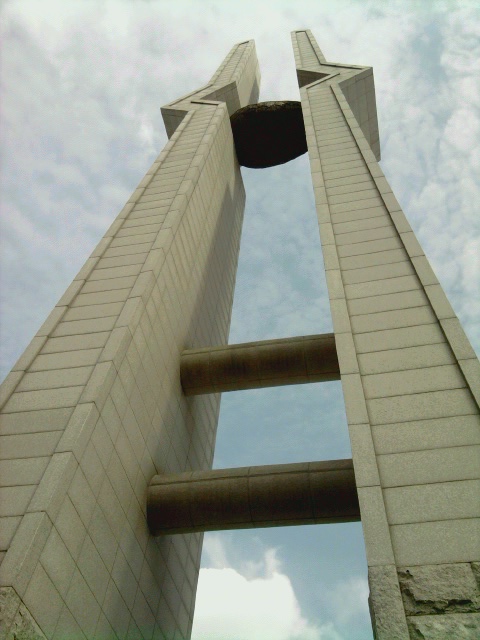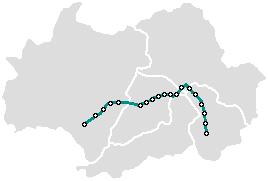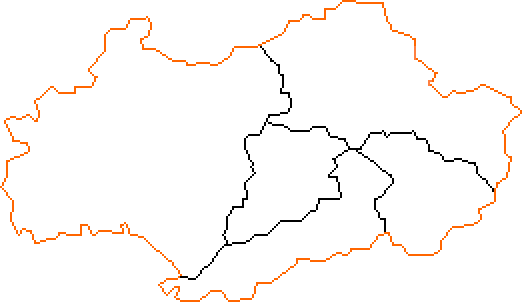|
Geumnamno 4-ga Station
Geumnamno 4(sa)-ga station () is a station of Gwangju Metro Line 1 in Chunggeum-dong, Dong District, Gwangju, South Korea South Korea, officially the Republic of Korea (ROK), is a country in East Asia, constituting the southern part of the Korean Peninsula and sharing a land border with North Korea. Its western border is formed by the Yellow Sea, while its eas .... Station Layout External links *Cyber station informationfrom Gwangju Metropolitan Rapid Transit Corporation *Cyber station informationfrom Gwangju Metropolitan Rapid Transit Corporation Gwangju Metro stations Dong District, Gwangju Railway stations in South Korea opened in 2004 {{SouthKorea-railstation-stub ... [...More Info...] [...Related Items...] OR: [Wikipedia] [Google] [Baidu] |
Dong District, Gwangju
Dong District (Dong-gu) is a district, similar to a ward, situated in the city of Gwangju, South Korea. Mt. Mudeung is a famous landmark in the district. Modern art is displayed at the Street of Art, which was the first one of its kind in South Korea. It has Asian Cultural Center and Gwangju International Community Center. See also *Hwanggeum-dong, Gwangju Hwanggeum-dong is a ward of Dong District, Gwangju, South Korea South Korea, officially the Republic of Korea (ROK), is a country in East Asia, constituting the southern part of the Korean Peninsula and sharing a land border with North ... External linksWebsite of Dong-gu, Gwangju {{SouthKorea-geo-stub ... [...More Info...] [...Related Items...] OR: [Wikipedia] [Google] [Baidu] |
Gwangju
Gwangju () is South Korea's sixth-largest metropolis. It is a designated metropolitan city under the direct control of the central government's Home Minister. The city was also the capital of South Jeolla Province until the provincial office moved to the southern village of Namak in Muan County in 2005 because Gwangju was promoted to a metropolitan city and was independent of South Jeolla province. Its name is composed of the words ''Gwang'' () meaning "light" and ''Ju'' () meaning "province". Gwangju was historically recorded as ''Muju'' (), in which "Silla merged all of the land to establish the provinces of Gwangju, Ungju, Jeonju, Muju and various counties, plus the southern boundary of Goguryeo and the ancient territories of Silla" in the ''Samguk Sagi.'' In the heart of the agricultural Jeolla region, the city is also famous for its rich and diverse cuisine. History The city was established in 57 BC. It was one of the administrative centers of Baekje during the ... [...More Info...] [...Related Items...] OR: [Wikipedia] [Google] [Baidu] |
South Korea
South Korea, officially the Republic of Korea (ROK), is a country in East Asia, constituting the southern part of the Korea, Korean Peninsula and sharing a Korean Demilitarized Zone, land border with North Korea. Its western border is formed by the Yellow Sea, while its eastern border is defined by the Sea of Japan. South Korea claims to be the sole legitimate government of the entire peninsula and List of islands of South Korea, adjacent islands. It has a Demographics of South Korea, population of 51.75 million, of which roughly half live in the Seoul Capital Area, the List of metropolitan areas by population, fourth most populous metropolitan area in the world. Other major cities include Incheon, Busan, and Daegu. The Korean Peninsula was inhabited as early as the Lower Paleolithic period. Its Gojoseon, first kingdom was noted in Chinese records in the early 7th century BCE. Following the unification of the Three Kingdoms of Korea into Unified Silla, Silla and Balhae in the ... [...More Info...] [...Related Items...] OR: [Wikipedia] [Google] [Baidu] |
Gwangju Metro
Gwangju Metro () is the rapid transit system of Gwangju, South Korea, operated by the Gwangju Metropolitan Rapid Transit Corporation (GRTC, or Gwangju Metro). The subway network first opened in 2004 with 14 stations. The Gwangju Metro consists of one line, serving 20 operational stations, and operating on of route. It crosses both of the major rivers in Gwangju, the Yeongsan River and the Hwangryong River. Most of the system is underground, except for the sections between Sotae-Nokdong and Pyeongdong-Dosan. History * Apr 28, 2004 : Line 1 partially opened ( Nokdong ↔ Sangmu ) * Apr 11, 2008 : Line 1 fully opened ( Nokdong ↔ Pyeongdong ) Lines Line 1 As of 2021 Line 1 consists of twenty stations. Most trains run between Pyeongdong and Sotae, with about one train per hour continuing towards Nokdong. Line 2 Line 2 () of the subway is under construction as of 2021. It is scheduled to open in three phases between 2023 and 2025. Expansions and plans Plan to extend Line 1 ... [...More Info...] [...Related Items...] OR: [Wikipedia] [Google] [Baidu] |
Gwangju Metro Line 1
Gwangju Metro Line 1 is a rapid transit line in Gwangju, South Korea, operated by the Gwangju Metropolitan Rapid Transit Corporation (GRTC, or Gwangju Metro). It connects Nokdong station in Dong-gu at its eastern terminus to Pyeongdong station in Gwangsan-gu in the west, via the central business district and Gwangju Airport. On maps, it is designated by teal (). The line began operations in 2004, making Gwangju the fifth South Korean city with a rapid transit system. History * August 28, 1996: Ground breaking ceremony for the Line 1 * April 28, 2004: Line 1 partially opened (Nokdong ↔ Sangmu) * April 11, 2008: Line 1 fully opened (Nokdong ↔ Pyeongdong) Stations As of 2021 Line 1 consists of twenty stations. Most trains operate between Pyeongdong and Sotae, with about one service per hour continuing to Nokdong station. Plan to extend Line 1 The Gwangju City Government has a plan to extend the current Line 1 southward to Hwasun and northward to Naju. Recently, the Preside ... [...More Info...] [...Related Items...] OR: [Wikipedia] [Google] [Baidu] |
Nokdong Station
Nokdong station is a railway station on Gwangju Metro Line 1 in Nokdong, South Korea South Korea, officially the Republic of Korea (ROK), is a country in East Asia, constituting the southern part of the Korea, Korean Peninsula and sharing a Korean Demilitarized Zone, land border with North Korea. Its western border is formed .... The station is located near at the depot. Station layout Gallery File:Gwangju-metro-100-Nokdong-station-sign-20190522-061056.jpg File:Gwangju-metro-100-Nokdong-station-platform-20190522-061730.jpg File:Gwangju-metro-100-Nokdong-station-building-20190522-061848.jpg External links Gwangju Metro stations Railway stations opened in 2004 Dong District, Gwangju {{SouthKorea-railstation-stub ... [...More Info...] [...Related Items...] OR: [Wikipedia] [Google] [Baidu] |
Island Platform
An island platform (also center platform, centre platform) is a station layout arrangement where a single platform is positioned between two tracks within a railway station, tram stop or transitway interchange. Island platforms are popular on twin-track routes due to pragmatic and cost reasons. They are also useful within larger stations where local and express services for the same direction of travel can be provided from opposite sides of the same platform thereby simplifying transfers between the two tracks. An alternative arrangement is to position side platforms on either side of the tracks. The historical use of island platforms depends greatly upon the location. In the United Kingdom the use of island platforms is relatively common when the railway line is in a cutting or raised on an embankment, as this makes it easier to provide access to the platform without walking across the tracks. Advantages and tradeoffs Island platforms are necessary for any station with m ... [...More Info...] [...Related Items...] OR: [Wikipedia] [Google] [Baidu] |
Pyeongdong Station
Pyeongdong station () is a station of Gwangju Metro Line 1 in Woljeon-dong, Gwangsan District, Gwangju, South Korea. It is located near at the Okdong Vehicle Office in Pyeong-dong. This station is only a ground section. In the middle of the night, the five formations are rushing at Okdong Station. Station layout External links *Cyber station informationfrom Gwangju Metropolitan Rapid Transit Corporation *Cyber station informationfrom Gwangju Metropolitan Rapid Transit Corporation Gwangju Metro () is the rapid transit system of Gwangju, South Korea, operated by the Gwangju Metropolitan Rapid Transit Corporation (GRTC, or Gwangju Metro). The subway network first opened in 2004 with 14 stations. The Gwangju Metro consists o ... Gwangju Metro stations Gwangsan District Railway stations opened in 2008 {{SouthKorea-railstation-stub ... [...More Info...] [...Related Items...] OR: [Wikipedia] [Google] [Baidu] |
Geumnamno 5(o)-ga Station
Geumnamno 5(o)-ga station () is a station of Gwangju Metro Line 1 in Buk-dong, Buk District, Gwangju, South Korea. Station Layout External links *Cyber station informationfrom Gwangju Metropolitan Rapid Transit Corporation *Cyber station informationfrom Gwangju Metropolitan Rapid Transit Corporation Gwangju Metro () is the rapid transit system of Gwangju, South Korea, operated by the Gwangju Metropolitan Rapid Transit Corporation (GRTC, or Gwangju Metro). The subway network first opened in 2004 with 14 stations. The Gwangju Metro consists o ... Gwangju Metro stations Buk District, Gwangju Railway stations in South Korea opened in 2004 {{SouthKorea-railstation-stub ... [...More Info...] [...Related Items...] OR: [Wikipedia] [Google] [Baidu] |
Gwangju Metro Stations
Gwangju () is South Korea's sixth-largest metropolis. It is a designated metropolitan city under the direct control of the central government's Home Minister. The city was also the capital of South Jeolla Province until the provincial office moved to the southern village of Namak in Muan County in 2005 because Gwangju was promoted to a metropolitan city and was independent of South Jeolla province. Its name is composed of the words ''Gwang'' () meaning "light" and ''Ju'' () meaning "province". Gwangju was historically recorded as ''Muju'' (), in which "Silla merged all of the land to establish the provinces of Gwangju, Ungju, Jeonju, Muju and various counties, plus the southern boundary of Goguryeo and the ancient territories of Silla" in the ''Samguk Sagi.'' In the heart of the agricultural Jeolla region, the city is also famous for its rich and diverse cuisine. History The city was established in 57 BC. It was one of the administrative centers of Baekje during the Three K ... [...More Info...] [...Related Items...] OR: [Wikipedia] [Google] [Baidu] |



